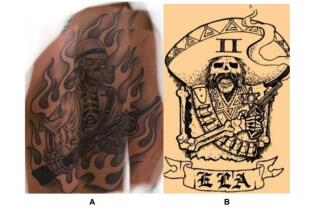County Orders Its Trappers to Stop Using Leg Traps
- Share via
Reacting to complaints that a coyote caught in Topanga Canyon chewed off its leg to escape a steel-jawed trap, Los Angeles County officials have ordered county trappers to stop using leg traps.
County workers instead will attempt to capture coyotes with more humane box traps, Agriculture Department officials said.
The change was ordered by county Agricultural Commissioner E. Leon Spaugy as the Board of Supervisors prepared to vote Tuesday on its own jaw-trap ban.
Officials admitted that they were feeling the wrath of animal-rights activists, who were angered late last week by the mutilation of the coyote.
Gnawed Off Foot
In that incident, a coyote trapped behind a Hodgson Circle Drive home reportedly gnawed off its left rear leg to escape from the trap--only to hobble into another trap that snared its right front leg. The Topanga Canyon trapping, which resulted in four coyotes being caught and killed, was triggered by a complaint that a coyote had killed a kitten.
Animal activists learned of the maiming when an Agriculture Department trapper shot the animal and took its remains to the county’s Agoura Animal Shelter to be checked for signs of plague and rabies.
“It was disgusting, really sick,” said Heather Davis, a shelter employee who observed the coyote.
Animal-rights activists responded by demanding that the county ban leg traps. Aides to Supervisor Mike Antonovich were drafting such a resolution when Spaugy voluntarily agreed to stop using them Thursday.
“We’re pleased; that was our goal,” said Peter Whittingham, an assistant to Antonovich. “Coyotes are killed after they’re caught, but the purpose of the traps is not to have animals tortured.”
Effectiveness Studied
Richard Wightman, who heads the Agriculture Department’s coyote trapping program, said he will evaluate the effectiveness of box traps during the next six months and report to the supervisors. He questioned, however, whether the 4-foot-long wire cage traps--which have doors that close when a coyote walks inside--will work as well as leg traps.
“I don’t want to spend $15,000 on them and find they don’t work or are getting ripped off,” Wightman said. “I’ll prepare a report for the board on an unbiased basis. But if the fact is they don’t work, that’s what I’ll say.”
Box traps cost about $125 each. The county has one and will immediately buy four more, Wightman said. The county has about 150 leg traps, which cost about $5 each.
Wightman said there had been no reports of coyote mutilations before the Topanga Canyon incident.
Although the jaw-trap ban was hailed by some animal lovers, others said they will press for elimination of all coyote trapping by the county.
“We’re horrified that you can call up the county and have coyotes killed just because you lost a cat,” said Maggie Brammhall, a Topanga Canyon resident. “We have coyotes up here. But we don’t have a coyote problem.”
Patience Urged
Animal-control experts, meanwhile, said county agriculture workers will have to be patient with the walk-in traps.
“It takes a few weeks for a coyote to get used to a walk-in trap,” said Tom Walsh, a San Fernando Valley district supervisor for the Los Angeles City Department of Animal Regulation. “You have to set it up and leave it baited. They look at it suspiciously at first.”
Walsh said city animal-control officers use cage traps for about 20% of the coyotes they catch. But they use leg traps when they are in a hurry to catch troublesome coyotes, he said.
More to Read
Sign up for Essential California
The most important California stories and recommendations in your inbox every morning.
You may occasionally receive promotional content from the Los Angeles Times.














